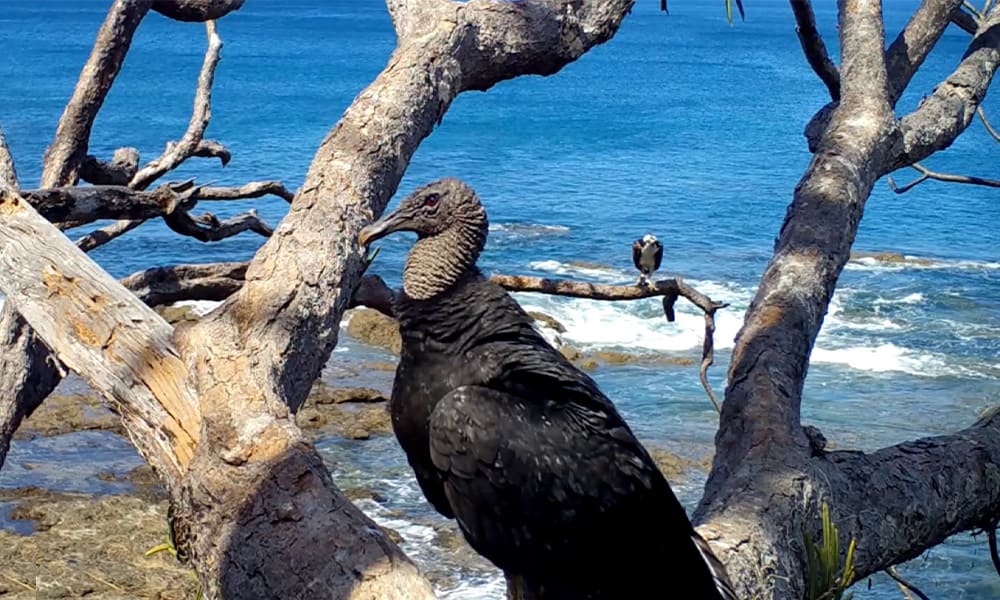Many species are difficult, or nearly impossible, to see in the wilderness of Costa Rica. This is not so for today’s creature. If you’ve spent any time in this country, you have definitely seen the black vulture.
The black vulture (Coragyps atratus) is known as the zopilote, or more specifically the zopilote negro in Spanish. They are large birds that are completely black save for some white feathers on the tips of the wings that kind of look like spread fingers when they fly. Like all of the other species of vultures in Costa Rica, the black vulture sports a bald head.
It is commonly believed that the reason that most vulture species lack feathers on their heads is because they eat dead things, and it’s an adaptation that prevents bacteria laden chunks of their meals from getting stuck on their feathers. More recently, researchers are also considering they may use their featherless heads to help regulate their body temperature.
Whatever the reason is for the baldness, the result of their wrinkled heads is a look that my son describes as ‘yucky.’
Unfortunately, ‘yucky’ heads are just one of the reasons that black vultures should consider investing in a public relations firm. They are also extremely common which tends to make people disinterested (think pigeons). On top of that, their diet consists of dead stuff, which can be gross to see/smell. On the home front, they’re not above ripping into your garbage bags, spreading your trash all over the place, looking to dine on yesterday’s dinner scraps.
Despite all of that, black vultures are an important part of the ecosystem in Costa Rica. They are responsible for the cycling of nutrients from carrion back into the environment. Black vultures help to remove pathogens and toxins from the environment. If carcasses were left, uneaten, in the environment, diseases could pass to other wildlife or even people.
The black vulture’s diet extends beyond everything stinky and dead. They also consume fruits, especially palm fruits. They’re also able to hunt. They will opportunistically prey on sick, old or weak animals. They’ll eat nestlings of herons and seabirds from nesting colonies. They’re also a significant predator of hatchling sea turtles. (Yikes. That’s a rough list.)
I see black vultures extremely frequently while checking camera traps and just in general living my life. For example, I just got up while typing this article, walked into my backyard and looked around and saw a black vulture soaring overhead. They’re exceptionally common. I have probably recorded thousands of black vulture videos on my camera traps.
They are, of course, present if my camera is placed near some carrion, but they also frequent sources of water for a drink or a bath. I’ve picked out a few particularly interesting black vulture clips in the video below:
About the Author
Vincent Losasso, founder of Guanacaste Wildlife Monitoring, is a biologist who works with camera traps throughout Costa Rica. Learn more about his projects on facebook or instagram. You can also email him at: vincent@guanacastewildlifemonitoring.com






